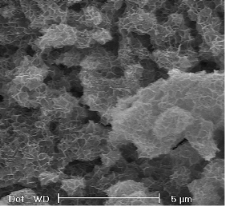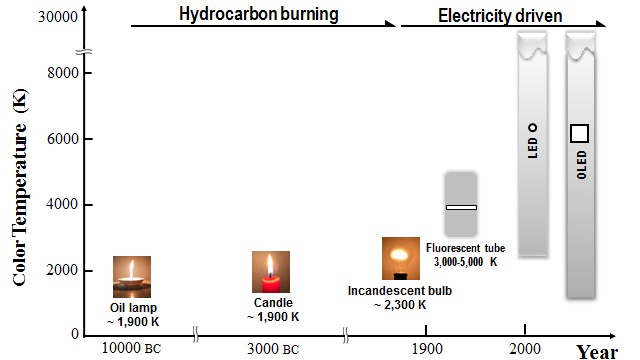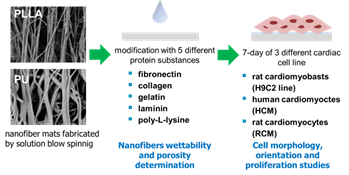Day 2 :
Keynote Forum
James H Johnston
Victoria University of Wellington, New Zealand
Keynote: Nanostructured Calcium Silicate – A Novel “Green†Material Produced Sustainably from Geothermal Water and its Environmental Remediation and Industry Applications
Time : 09:30-10:10

Biography:
Abstract:


Recent Publications:
- Borrmann T, Johnston J H, McBrearty R (2009) Nano-Structured Calcium Silicate - A Solution to the Formation of Silica Scale in Geothermal Water. GRC Transactions 33:695-698.
- Gunnarsson I, Arnórsson S (2003) Silica Scaling: The Main Obstacle in Efficient Use of High-Temperature Geothermal Fluids. International Geothermal Conference, Reykjavík, Sept. 2003 Session #13, 30-36.
- Chan S H (1989) A review on solubility and polymerization of silica. Geothermics 18:49-56.
- Borrmann T, Johnston J H, McFarlane A J, McBrearty R (2005) Realizing Complete Silica Removal - Moving Technology from the Laboratory to Pilot Scale. GRC Transactions 4:996-998.
- Johnston J H, Borrmann T, Mcfarlane A J (2006) Nano-structured Calcium Silicate, Functionalised Forms Thereof, Preparation and Uses. NZ Patent 537747. (2006).
- Johnston J H, Mcfarlane A J, Borrmann T, Moraes J (2004) Nanostructured Silica and Silicates: New Materials and their Applications in Paper. Current Applied Physics 4:411-414.
- Cairns M J, Borrmann T, Johnston J H, Hoell W (2006) A Study of the Uptake of Copper Ions by Nano-structured Calcium Silicate, Microporous Mesoporous Mater. 95:126-134
Keynote Forum
Jwo-Huei Jou
National Tsing Hua University, Taiwan
Keynote: 10:10-10:50
Time : 10:10-10:50

Biography:
Abstract:

2. S. M. Pauley (2004) Lighting for the human circadian clock: Recent research indicates that lighting has become a public health issue. Med. Hypotheses 63: 588–596.
3. http://www.darksky.org
4. Monico, L. et al. (2013) Degradation Process of Lead Chromate in Paintings by Vincent van Gogh Studied by Means of Spectromicroscopic Methods. 3. Synthesis, Characterization, and Detection of Different Crystal Forms of the Chrome Yellow Pigment. S. Anal. Chem. 85 (2): 851–859.
5. Jou, J. H. et al. (2013) Candle Light-Style Organic Light-Emitting Diodes. Adv. Funct. Mater. 23: 2750–2757.
6. Jou, J. H. et al. (2014) Enabling a blue-hazard free general lighting based on candle light-style OLED. Optics Express 23 (11): A577.
7. Jou, J. H. et al., (2016) Wet-process feasible candlelight OLED,”
J. Mater. Chem. C 4, 6070-6077.
Keynote Forum
Ajay Kumar Mishra
University of South Africa, South Africa
Keynote: Smart composite materials for waste water remediation
Time : 11:05-11:45

Biography:
Abstract:
Recent Publications:
- Mamba G, Mishra AK (2016) Graphitic carbon nitride (g-C3N4) nanocomposites: A new and exciting generation of visible light driven photocatalysts for environmental pollution remediation. Applied Catalysis B: Environmental 198, 347-377.
- Mamba G, Mishra AK (2016) Advances in Magnetically Separable Photocatalysts: Smart, Recyclable Materials for Water Pollution Mitigation. Catalysts 6(6), 79.
- Vunain E, Mishra AK, Mamba BB (2016) Dendrimers, mesoporous silicas and chitosans nanosorbents for the heavy metal removal: A Review. International Journal of Biological Macromolecules 86, 570-586.
- Agorku ES, Mamo MA, Mamba BB, Pandey AC, Mishra AK (2015) Cobalt-doped ZnS-reduced graphene oxide nanocomposite as an advanced photocatalytic material. Journal of Porous Materials 22, 47-56.
- Dlamini, DS, Wang J, Mishra AK, Mamba BB, Hoek EMV (2014) Effect of Cross-Linking Agent Chemistry and Coating Conditions on Physical, Chemical and Separation Properties of PVA-PSf Composite Membranes. Separation Science and Technology 49 (1), 22-29.
- Industrial and Engineering Chemistry|Organic Chemistry|Nanoscience and Technology|Physical and Theoretical Chemistry|Medicinal Chemistry|Environmental Chemistry
Location: Endeavour

Chair
Luisa Di Paola
Università Campus Biomedico, Italy

Co-Chair
Bhaskar Chakraborty
Sikkim Government College, India
Session Introduction
Satya Dubey
Cranfield University, UK
Title: Catalytic Synthesis of Environmental friendly Polymer Poly Lactic Acid via Continuous Reactive Extrusion: Recent Trends
Time : 11:45-12:10

Biography:
Abstract:

- Satya P Dubey1, Hrushikesh A Abhyankar, Veronica Marchante, James L Brighton, Kim Blackburn, Clive Temple, Björn Bergmann, Giang Trinh, Chantal David, “Modelling and Validation of Synthesis of Poly Lactic Acid using Alternative Energy Source through Continuous Reactive Extrusion Process” Polymers (Vol:8, 164; doi:10.3390/polym8040164 2016
- Satya P Dubey1, Hrushikesh A Abhyankar, Veronica Marchante, James L Brighton, Björn Bergmann, Giang Trinh, Chantal David, “Microwave Energy assisted Synthesis of Poly Lactic Acid through Continuous Reactive Extruder: Reaction kinetics modelling approach” (RSC Advances, 2017, 7, 18529 – 18538. DOI: 10.1039/c6ra26514f.)
- Satya P Dubey1, Hrushikesh A Abhyankar, Veronica Marchante, James L Brighton, Kim Blackburn, “Review on catalytic progress on poly lactic acid formation through ring opening polymerization” (International Research Journal of Pure and Applied Chemistry)”. 2016 – Vol: 12, issue 3, IRJPAC/26179
- Satya P Dubey1, Hrushikesh A Abhyankar, Veronica Marchante, James L Brighton, Björn Bergmann, “Mathematical Modeling for Continuous Reactive Extrusion of Poly Lactic Acid formation by Ring Opening Polymerization Considering Metal/Organic Catalyst and Alternative Energies” International Journal of Chemical, Nuclear, Materials and Metallurgical Engineering-( Vol:9, No:2, 2015)
- A. Ojha, N. Vyas, and Satya P Dubey, “Gas phase structural stability of neutral and zwitterionic forms of alanine in presence of (H2O)n=1–7 clusters: A density functional theory study,” Comput. Theor. Chem., vol. 1002, pp. 16–23, Dec. 2012.
Mahendra Nath Roy
University of North Bengal, India
Title: Encapsulation of β-Cylodextrin with Vitamine-B and Vitamin-C molecules
Time : 12:10-12:35

Biography:
Abstract:

Figure 1. Encapsulation of nicotinic acid and ascorbic acid with β-CD
Recent Publications:
- M. N. Roy*, D. Ekka, J Phys. Chem. B, 2012, 116, 11687.
- M. N. Roy*, A. Bhattacharjee, Phys. Chem. Chem. Phys. 2010, 12, 14534.
- M. N. Roy*, A. Roy, S. Saha, Carbohydrate Polymers, 2016, 151, 458-466.
- M. N. Roy*, S. Saha, T. Ray, S. Basak, New. J. Chem., 2016, 40, 651.
- M. N. Roy*, S. Saha, M. Kundu, S. Barman, Chemical Physics Letters. 2016, 655, 43.
- M. N. Roy*, S. Saha, S.Barman and D. Ekka. RSC Adv., 2016, 6, 8881.
- M. N. Roy*, D. Ekka, Amino Acids, 2013, 45, 755.
Ewelina Tomecka
Warsaw University of Technology, Poland
Title: Nanofiber mats fabricated by solution blow spinning as potential substrates for cardiac cell culture
Time : 12:35-13:00

Biography:
Abstract:

Recent Publications:
- Ricotti L, Polini A, Genchi G G, Ciofani G, Iandolo D, Vazão H, Mattoli V, Ferreira L, Menciassi A, Pisignano D (2012) Proliferation and skeletal myotube formation capability of C2C12 and H9c2 cells on isotropic and anisotropic electrospun nanofibrous PHB scaffolds. Biomedical Materials, 7: 035010.
- Orlova Y, Magome N, Liu L, Chen Y, Agladze K, (2011) Electrospun nanofibers as a tool for architecture control in engineered cardiac tissue. Biomaterials, 32: 5615–5624.
- Ashammakhi N, Ndreu A, Yang Y, Ylikuppila H, Nikkola L (2012) Nanofiber-based scaffoldsnfor tissue engineering. European Journal of Plastic Surgery, 35: 135 – 149.
- WojasiÅ„ski M, Pilarek M, Ciach T (2014) Comparative studies of electrospinning and solution blow spinning processes for the production of nanofibrous poly(L-lactic acid) materials for biomedical engineering. Pol. J. Chem. Technol. 16: 43–50.
- Tomecka E, Wojasinski M, Jastrzebska E, Chudy M, Ciach T, Brzozka Z (2017) Poly(L-lactic acid) and polyurethane nanofibers fabricated by solution blow spinning as potential substrates for cardiac cell culture. Materials Science and Engineering C 75: 305–316.
Mirosław Kwiatkowski
AGH University of Science and Technology, Poland
Title: Application of the LBET method to an analysis of single and multiple carbon dioxide and methane adsorption isotherms
Time : 14:00-14:25

Biography:
Abstract:
Mustapha abba Tijjani
University of Maiduguri, Nigeria
Title: Isolation and Structural Elucidation of 20 hydroxyecdystone from Vitex doniana Sweet Stem bark (Black plum)
Time : 14:25-14:50

Biography:
Abstract:
Recent Publications:
- Mustapha A Tijjani, Garba T Mohammed Yagana T Alkali, Thiza B Adamu1, Fanna I Abdurahaman (2017). Phytochemical analysis, analgesic and antipyretic properties of ethanolic leaf extract of Vernonia amygdaline Del. Journal of Herbmed Pharmacology
- Shettima A Y, Tijani MA, Mekaron K., Henry O. Modu B. and Tijani Y. (2016).Effect of methanolic root extract of Guiera senegalensis on some Biochemical and Hematological Parameters in Albino Rats. The Pharmaceutical and chemical Journal. 3(2): 71-78
- M.A. Tijjani; S.W. Buba , G.M. Tom, F.I. Abdulrahman, A.I. Mohammed B.A Gana.(2014). Preliminary Phytochemical screening and mineral Content of Nigella Sativa Linn. (Black Caraway) Seed. International Journal of Medicinal Chemistry & Analysis. Vol.4./issue 4. 226-2210.
- Shettima A.Y. Karumi Y, Sodipo OA, Usman H and Tijjani MA. (2013).Gas Chromatography–Mass Spectrometry (GC-MS) Analysis of Bioactive Components of Ethyl acetate Root Extract of Guierasenegalensis J.F. Gmel. Journal of Applied Pharmaceutical Science Vol. 3 (03), pp. 146-150.
- Mustapha A. Tijjani, Fanna I. Abdulrahman, Irfan Z. Khan and Umar K. Sandabe (2012). The Effects of Ethanolic Extracts of Vitex Doniana Stem bark on Central and Peripheral Nervous System of on laboratory Animals. Journal of Applied Pharmaceutical Science. Vol. 02(03).Pp 74-79.
Phanice Wangila
University of Kabianga,Kenya
Title: Concentration of Pb and Cd in Soil and Reed Plant of Busia and Lugari Regions of Western Kenya
Time : 14:50-15:15

